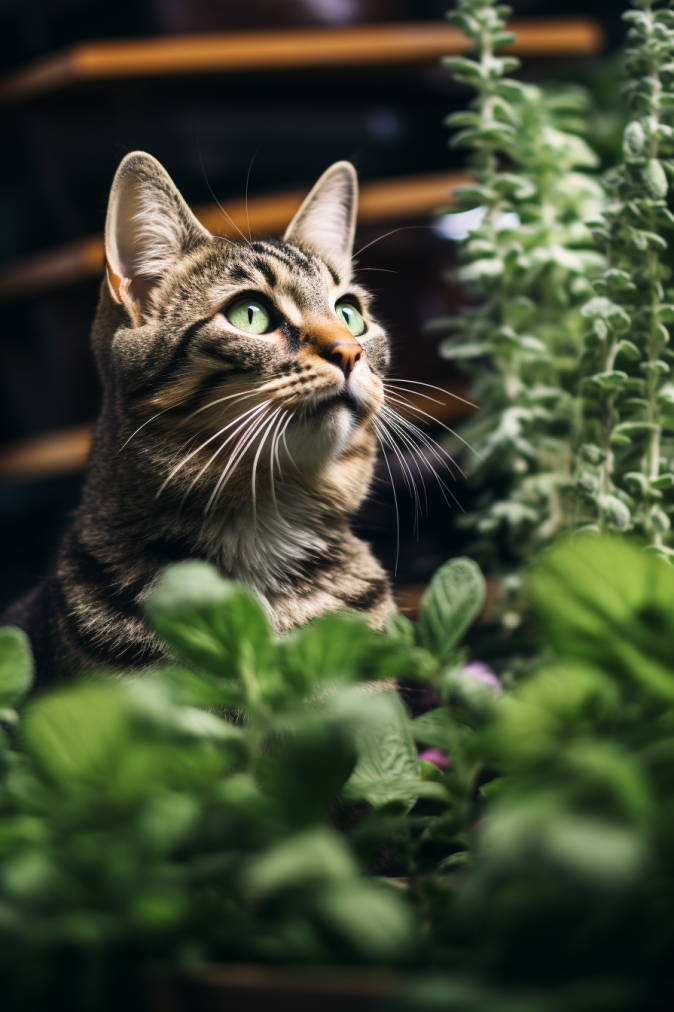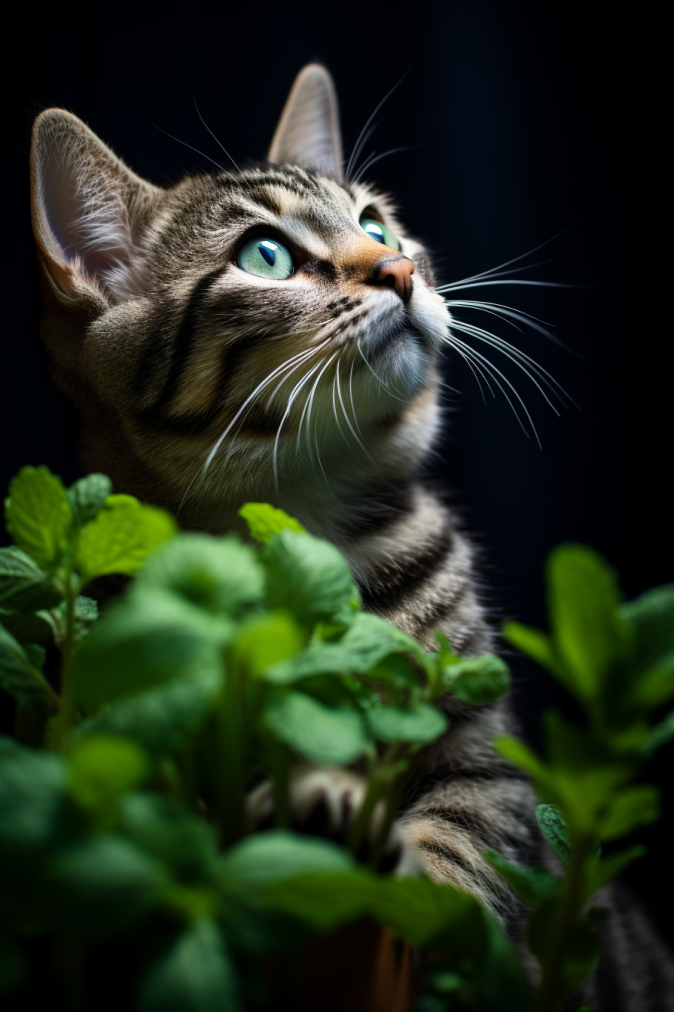
As a cat owner, it’s natural to be concerned about the safety of the plants and herbs in your home, especially when it comes to your feline friend’s well-being.
Mint is a popular herb known for its refreshing scent and various uses, but what about its safety for cats?
In this comprehensive guide, we’ll explore the potential risks associated with mint and its impact on your cat’s health.
Let’s delve into the details to ensure that you have all the information you need to keep your beloved pet safe.
Are Mint Products Toxic or Safe For Cats?
Mint, known for its pleasant aroma and common use in households, maybe a source of concern when it comes to our feline friends.
While mint is generally safe for humans and even offers certain health benefits, it’s important to note that the same may not be true for cats.
According to the American Society for the Prevention of Cruelty to Animals (ASPCA), mint is considered toxic to cats and can pose various health risks if ingested.
Therefore, it’s crucial for cat owners to exercise caution and have a clear understanding of the potential dangers associated with exposing their cats to mint.
- Read also: A Guide on How to Grow Spider Plants in Water
- Read also: A Comprehensive Guide on How to Use Soil Conditioner

Which Parts Of The Plant Are Toxic or Poisonous for My Feline Friends?
Understanding the potential risks of mint for your feline companions involves recognizing which parts of the plant can be harmful.
Specifically, the essential oils and plants within the Mentha genus, encompassing varieties like peppermint and spearmint, pose a threat to cats.
These plants contain essential oils that have the potential to induce gastrointestinal upset, central nervous system depression, and even liver damage in felines.
Therefore, it is crucial for cat owners to be vigilant in preventing their cats from accessing not only the plants themselves but also any products containing mint as an ingredient.
Which Types of Mint Are Safe for Cats?
Various types of mint, including peppermint, spearmint, lavender mint, apple mint, and pineapple mint, are generally considered safe for cats.
These mints belong to the culinary mint category and are commonly found in households.
In moderate amounts, these mint varieties are unlikely to cause harm to your feline friend.
However, it’s crucial to be cautious about Pennyroyal (Mentha pulegium), a type of mint that falls outside the culinary category.
Pennyroyal is known to be toxic for both humans and pets, including cats.
It contains compounds that can be harmful when ingested and should be avoided entirely.
When offering mint to your cat, it’s advisable to do so in moderation.
While many cats may show interest in or even enjoy the aroma of mint, excessive consumption can still lead to digestive upset.
Additionally, if you’re considering introducing a new type of mint to your cat’s environment, observe their reaction and monitor for any signs of discomfort or adverse effects.
What Are the Signs and Symptoms of Poisoning?

In the unfortunate event that your cat encounters mint and displays signs of poisoning, it’s crucial to be able to identify the associated symptoms.
Recognizing these signs promptly allows for swift action and ensures the well-being of your feline companion.
- Vomiting: Cats may vomit as a response to ingesting toxic substances like mint. Frequent or persistent vomiting is a clear sign of potential poisoning.
- Diarrhea: Changes in bowel movements, particularly the onset of diarrhea, can be another symptom of mint poisoning in cats.
- Weakness: Mint poisoning can lead to a general weakness in your cat. If you notice a sudden lack of energy, lethargy, or difficulty moving, it may indicate a potential issue.
- Changes in behavior: Cats may exhibit alterations in behavior when affected by mint poisoning. This can manifest as unusual aggression, excessive vocalization, or withdrawal from normal activities.
In severe cases, ingestion of toxic plants like mint can result in more serious complications, affecting vital organs and overall well-being.
If you suspect your cat has been exposed to mint or any other toxic substances, it’s crucial to seek immediate veterinary care.
Swift action can make a significant difference in the outcome of poisoning cases.
Contact your veterinarian or an emergency animal poison control hotline immediately.
Provide information about the potential exposure, and the symptoms observed, and follow their guidance on the next steps, which may include inducing vomiting, administering activated charcoal, or other treatments depending on the severity of the poisoning.
How to Safeguard Yourself When Handling Mint Plants
Ensuring the safety of your cat involves adopting proactive measures when handling mint plants to minimize the risk of exposure.
Here are detailed steps to safeguard your feline friend and maintain a secure home environment:
Strategic placement of mint plants
Choose locations for your mint plants that are inaccessible to your cat.
Consider placing them on elevated shelves or using hanging planters.
This prevents direct contact and reduces the likelihood of your cat nibbling on the leaves.
Secure storage of mint products
Be mindful of any mint-containing products, including essential oils, sprays, or herbal blends, that your cat may encounter.
Store these items securely in cabinets or areas that your cat cannot access.
This precaution prevents accidental ingestion and exposure to potentially harmful substances.
Regular monitoring and inspection
Regularly monitor your cat’s environment for any signs of attempted access to mint plants or products.
Conduct routine inspections to ensure that mint remains in secure locations and that there are no opportunities for your cat to come into contact with it.
Educate household members
Ensure that everyone in your household is aware of the potential risks associated with mint exposure for cats.
Educate family members and guests about the importance of keeping mint plants and products out of the reach of pets to maintain safe living space.
Observe your cat’s behavior
Pay attention to your cat’s behavior when new plants or items are introduced into their environment.
If you notice heightened interest or attempts to interact with mint, it’s essential to reassess the placement and accessibility of the plants.
Consult with a veterinarian
If you have specific concerns about your cat’s reactions to mint or any other plants, consult with your veterinarian.
They can provide personalized advice based on your cat’s health, behavior, and potential sensitivities.

- Read also: A Guide on How To Grow Cypress Trees
- Read also: Cultivating Color: A Guide to Growing Croton Mammy
Conclusion
While mint is a popular herb with various uses, it’s important to recognize that it can be toxic to cats.
By being aware of the potential risks associated with mint exposure and taking proactive steps to prevent your cat from coming into contact with this plant, you can help ensure the safety and well-being of your feline companion.
If you suspect that your cat has ingested mint or is showing signs of poisoning, don’t hesitate to seek guidance from your veterinarian.
By staying informed and proactive, you can create a secure environment for your cat to thrive.
FAQs
No, cats should not consume mint, as it can be toxic to them. It’s important to prevent your cat from accessing mint plants, essential oils, or products containing mint.
If you suspect that your cat has ingested mint or is showing signs of poisoning, it’s essential to seek immediate veterinary care. Be prepared to provide details about the type of mint and the amount ingested, as this information can assist the veterinarian in providing the necessary treatment.
Yes, there are safe alternatives for cats to enjoy, such as catnip. Catnip is a non-toxic herb that is known to elicit a playful and stimulating response in cats. When offered in moderation, catnip can be a safe and enjoyable option for your feline friend.



